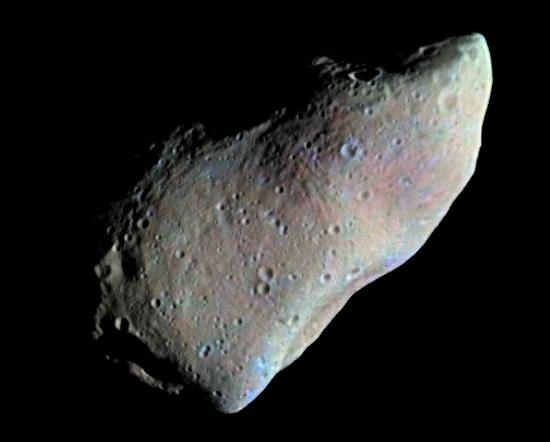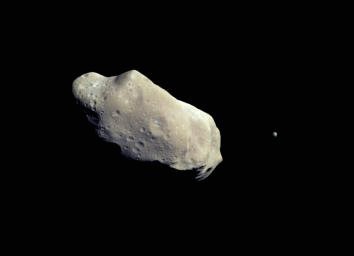|
|
|

|

|
a=(4+0)/10
a=(4+3)/10
a=(4+6)/10
a=(4+12)/10
a=(4+24)/10
etc...
|
|
|
|
|
|
|
|
|
|
|
|
|
|
|
|
|
|
|
|
|
|
|
|
|
|
|
|
|
|
|
|
|
|
|
|
For a long time we had very little idea what the surface of asteroids looked like -- too small, too far away.
On the way to Jupiter, the Galileo probe photographed the
surface of a two asteroids - Gaspra and Ida:
|
|
|

|

|
Ida has a moon! (called Dactyl) (Ida: 58x23 km, Dactyl: 1.6x1.2 km)
Other asteroids do, too. 10-30% of asteroids may have sizable moons (even bigger than Dactyl).
Signs of impacts abound: